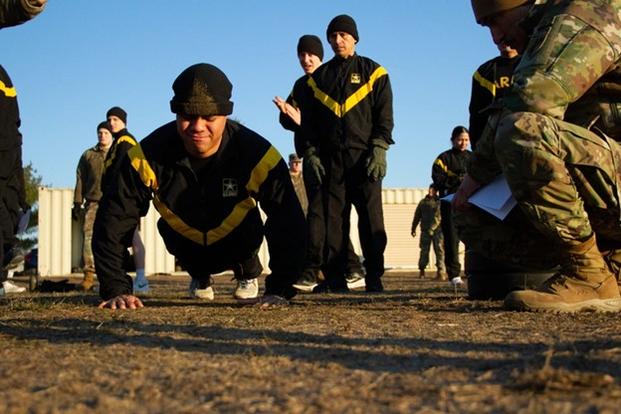As obesity rates climb across America, the Army’s new body-composition policy arrives at a critical moment. This is not just a question of appearance; it is a matter of health, readiness, and credibility. For years, the military has tolerated ambiguity, sometimes enforcing standards and at other times loosening them in order to meet recruiting goals in the midst of an unhealthy society. The new directive seems to be an attempt to put more weight on performance, rather than leaving soldiers always caught in a cycle of shifting rules.
A Brief History Of Standards
In 1986, the Army formally codified body-composition rules in Army Regulation 600-9, following a 1981 DoD directive mandating the establishment of body composition standards in the armed forces. The Army regulation established height-and-weight tables as an initial screen, with circumference-based body-fat measurements for those who exceeded the limits. This is a two-step process still generally in place today.
The program did not remain entirely static. An updated version with new charts appeared in 2006. The policy was updated again in 2013 by clarifying command responsibilities and dealing with more administrative issues. What stayed constant was the reliance on tables and tape, even as soldiers and medical experts pointed out the method was crude and often unfair to certain body types.
By the late 2010s, researchers began testing alternatives, from dual x-ray scans to 3-D body imaging, and comparing body-fat estimates to actual performance data. That research helped set the stage for reform. In March 2023, the Army issued Directive 2023-08, creating a performance-based exemption: soldiers who scored 540 or higher on the Army Combat Fitness Test (ACFT), with at least 80 points in each event, no longer had to undergo circumference taping if they were determined to be overweight. A few months later, Directive 2023-11 recalibrated the tape test itself, adjusting the formulas to better capture diverse body types and to correct for some of the old method’s most glaring inaccuracies. In September 2025, the Army announced those who earn 465 points or higher on the Army Fitness Test (AFT), with a minimum of 80 points in every event, are exempt from body-fat measurement.
The Navy’s Waistline Loophole
While the Army tinkered with exemptions, the Navy embraced something else entirely. Its Body Composition Assessment still begins with a height and weight screen, but sailors who exceed the limits can pass outright if their abdominal circumference is under 39 inches for men or 35.5 inches for women. In theory, this seems like a decisive standard.
It is also a ridiculous one. A 38-inch waistline on a sailor is not evidence of fitness; it is a warning sign. Research shows abdominal circumference is strongly linked to metabolic disease and injury risk. Treating that measurement as “good enough” sends the wrong message. It makes the Navy look unserious about health and discipline and invites liability when those sailors struggle with physical demands of deployment.
The Army has never gone to a waist-only rule, though its tape test is hardly better. Servicemembers joke that a thick neck is the best path to compliance. Both systems show what happens when services confuse convenient numbers for meaningful standards: rules that neither reflect readiness nor inspire confidence in the uniform.
Obesity As A Readiness Problem
The broader context underscores the stakes. The CDC has reported servicemembers with obesity are 33% more likely to suffer musculoskeletal injuries than their healthier peers. A 2024 study in Occupational Medicine found obesity erodes endurance, increases injury rates, and shrinks the pool of eligible recruits. The American Security Project estimates obesity costs the military more than $1.25 billion each year in healthcare alone.
The recruiting system has also bent under pressure. In early 2025, the Army Inspector General reported some recruits were allowed into the Future Soldier Preparatory Course at up to 19% above the body-fat limit, with men registering as high as 45% body fat and women as high as 55%. That is not a readiness policy. It is a contradiction that undermines the entire program.

Building Standards Rewarding Fitness, Not Fat
The Army’s recent reforms are a step in the right direction, but the system still tilts against muscular soldiers while creating loopholes for those who are genuinely unfit. Fairness and discipline can be reconciled, but only if policies draw a sharper line between strength and excess fat. Three changes would move the services closer to that balance.
First, exemptions tied to performance should be broadened. Soldiers who excel on the AFT have already proven their readiness – and provided their uniform also fits to standard – dragging them through taping adds nothing. Second, the tape test should be phased out in favor of more accurate technologies. Dual x-ray scans and 3-D imaging are not science fiction; they are already in use in Army pilot programs and as a supplemental measurement. Third, recruiting standards must be enforced at the front door. Waiving body-fat rules to fill quotas is not only unfair to those who maintain discipline, but it is a direct threat to readiness. It also places those soldiers at a disadvantage before they even begin their careers.
A Standard Worthy Of The Uniform
Military service has always demanded more than meeting a chart. It demands discipline, endurance, and health. Allowing sailors to pass with a 38-inch waist or soldier to sneak through with inflated tape scores does not reflect those values. At the same time, punishing strength by treating muscle as fat undercuts the very qualities the services should prize. The way forward is not lowering the bar but raising it: performance-driven standards that reward genuine fitness while closing the door on obesity. Anything less weakens the force and cheapens the uniform.
















